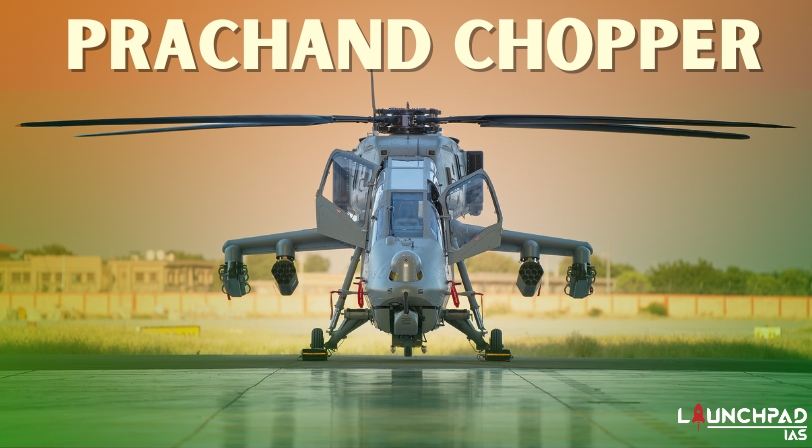Hindustan Aeronautics Limited (HAL) has indigenously developed a multi-role Light Combat Helicopter (LCH), Prachand which is suitable for operating in high-altitude battlefields.

What is a Light Combat Helicopter?
About:
- It is the only attack helicopter in the world. It can land and take off at an altitude of 5,000 meters with a considerable load of weapons and fuel.
- The helicopter uses radar-absorbing material to lower radar signature and has a significantly crash-proof structure and landing gear.
- A pressurized cabin offers protection from Nuclear, Biological, and Chemical (NBC) contingencies.
- The helicopter is equipped with a countermeasure dispensing system. It safeguards it from enemy radars or infrared seekers of enemy missiles.
- The HAL manufactures two French-origin Shakti engines that power the LCH.
Origin:
- It was during the 1999 Kargil war that the need was first felt for a homegrown lightweight assault helicopter that could hold precision strikes in all Indian battlefield scenarios.
- This meant a craft that could operate in very hot deserts and very cold high altitudes, in counter-insurgency scenarios to full-scale battle conditions.
- India has been operating sub-3-ton category French-origin legacy helicopters, Chetak and Cheetah, made in India by Hindustan Aeronautics Limited (HAL).
- These single-engine machines were, primarily, utility helicopters. Indian forces also operate the Lancer, an armed version of Cheetah.
- Additionally, the Indian Air Force is currently operating the Russian-origin Mi-17 and its variants Mi-17 IV and Mi-17 V5, with a maximum take-off weight of 13 tonnes, and plans to phase them out starting in 2028.
- The government sanctioned the LCH project in October 2006 and HAL was tasked to develop it.
Significance:
The LCH has the capabilities of combat roles such as destruction of enemy air defence, counter insurgency warfare, combat search and rescue, anti-tank, and counter surface force operations.


